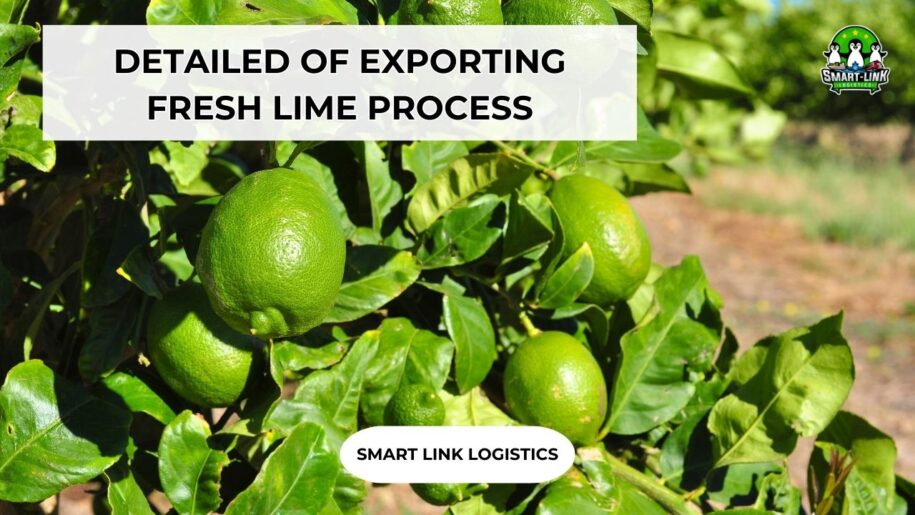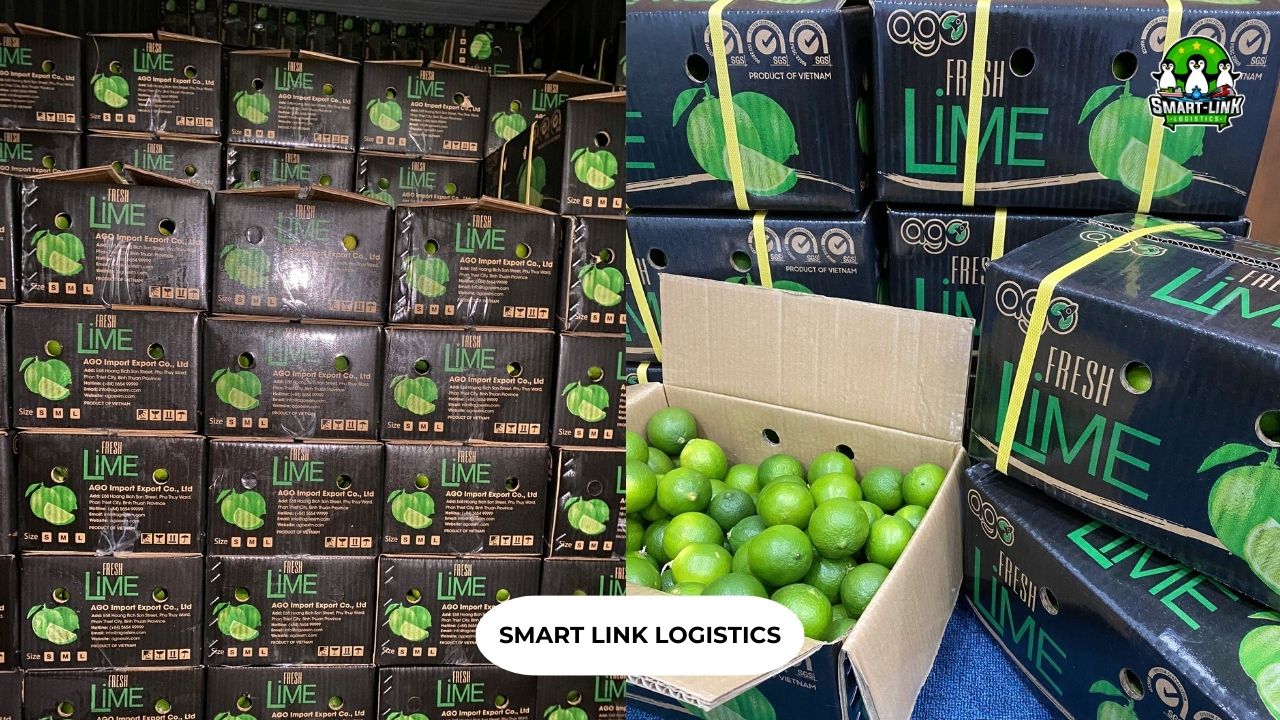
DETAILED OF EXPORTING FRESH LIME PROCESS
Fresh lime—especially seedless varieties—is becoming one of Vietnam’s most promising agricultural export products. With its appealing flavor, ease of preservation, and high economic value, fresh lime has gained increasing popularity in demanding markets such as the United States, the European Union, Japan, and South Korea. However, to export fresh lime successfully, businesses must thoroughly understand the legal regulations, export procedures, required documentation, and labeling and packaging standards. In this article, Smart Link Logistics provides a complete and detailed overview of the exporting fresh lime process.
1. Legal Policies and Regulations for Fresh Lime Export
According to Decree No. 69/2018/ND-CP, fresh lime is not on the list of prohibited export goods. However, as a plant-based product, it is subject to phytosanitary inspection under Circular No. 15/2018/TT-BNNPTNT.
Therefore, businesses must prepare the following documents:
-
Phytosanitary Certificate
-
Fumigation Certificate (if applicable)
-
Standard export documents such as commercial invoices, sales contracts, etc.
Understanding and complying with legal regulations will help ensure smooth customs clearance and avoid the risk of shipment rejection.
2. HS Code and Export Duties for Fresh Lime
According to the 2024 Import-Export Tariff Schedule, fresh lime falls under HS Code group 080550:
| HS Code | Description | Export Duty (%) | VAT (%) |
|---|---|---|---|
| 08055010 | Lemons (Citrus limon) | 0% | 0% |
| 08055020 | Limes, seedless varieties (Citrus aurantifolia/latifolia) | 0% | 0% |
To determine the correct HS Code and apply the appropriate tax rates, it is advisable to consult logistics experts or professional customs declaration services like Smart Link.
3. Labeling Requirements for Exported Products
Packaging and labels for fresh lime exports must include the following information:
-
Name of the producer/packer
-
Production date and expiration date
-
Country of origin (Vietnam)
-
Ingredients (if applicable)
-
Storage conditions
-
Usage instructions
Information should be provided in English and the destination country’s language (if required), in compliance with the labeling regulations of the importing country.
4. Customs Documentation and Procedures for Fresh Lime Export
The export dossier typically includes:
-
Electronic customs declaration
-
Commercial contract
-
Commercial invoice
-
Packing list
-
Booking note / Bill of Lading
-
Phytosanitary Certificate
Additional documents depending on the market may include:
-
Certificate of Origin (C/O)
-
Certificate of Free Sale (CFS)
-
Health Certificate (HC)
Key documents explained:
-
C/O (Certificate of Origin): Enables preferential tariffs under FTAs (Forms D, E, B, etc.)
-
CFS (Certificate of Free Sale): Confirms the product is legally sold in the country of origin
-
Health Certificate: Certifies food safety compliance
-
Phytosanitary Certificate: Confirms the product has passed plant quarantine inspection

5. Five-Step Procedure for Exporting Fresh Lime
Step 1: Prepare Export Documents
Ensure all required documents are complete, including customs declaration, contracts, invoices, packing list, C/O, and phytosanitary certificate.
Step 2: Submit Customs Declaration
File the electronic declaration at the appropriate customs office.
Step 3: Document Review and Inspection
If the declaration is flagged for inspection (e.g., red channel), the shipment must be physically examined.
Step 4: Customs Clearance
Once all requirements are met, customs clearance is granted.
Step 5: Shipping and Delivery
Proceed with the shipment according to the booking schedule and update tracking information to the customer.
Important Notes When Exporting Fresh Lime Process
-
Preservation during transit: Maintain the product’s freshness by using reefer containers with ventilation settings between 10–30% and stable temperatures between 3–6°C.
-
Market-specific import requirements: For example, the U.S. enforces strict regulations on plant quarantine and pesticide residues.
-
Work with experienced logistics partners: Collaborating with a seasoned logistics provider specializing in agricultural exports can help optimize time and costs.
Exporting fresh lime process presents a valuable opportunity for Vietnamese businesses to expand into international markets and elevate the global image of Vietnamese agricultural products. However, a smooth export process requires thorough legal understanding, proper document preparation, and careful attention to the specific requirements of each target market.
If you’re looking for the best import-export solutions, feel free to contact us for detailed consultation. If you need legal support or assistance with customs procedures in import-export activities, please contact Smart Link Logistics for fast and efficient consultation. With over 14 years of experience in the transportation field, we are proud to accompany you throughout your journey.
Hotline: + 84 902 964 982 to know more about our services

If you require assistance with international import and export of goods, please contact our team at Smartlink Logistics. We are available to provide you with professional guidance on our services and the necessary customs procedures.
SMART LINK: BEST SERVICE BEST YOU


































